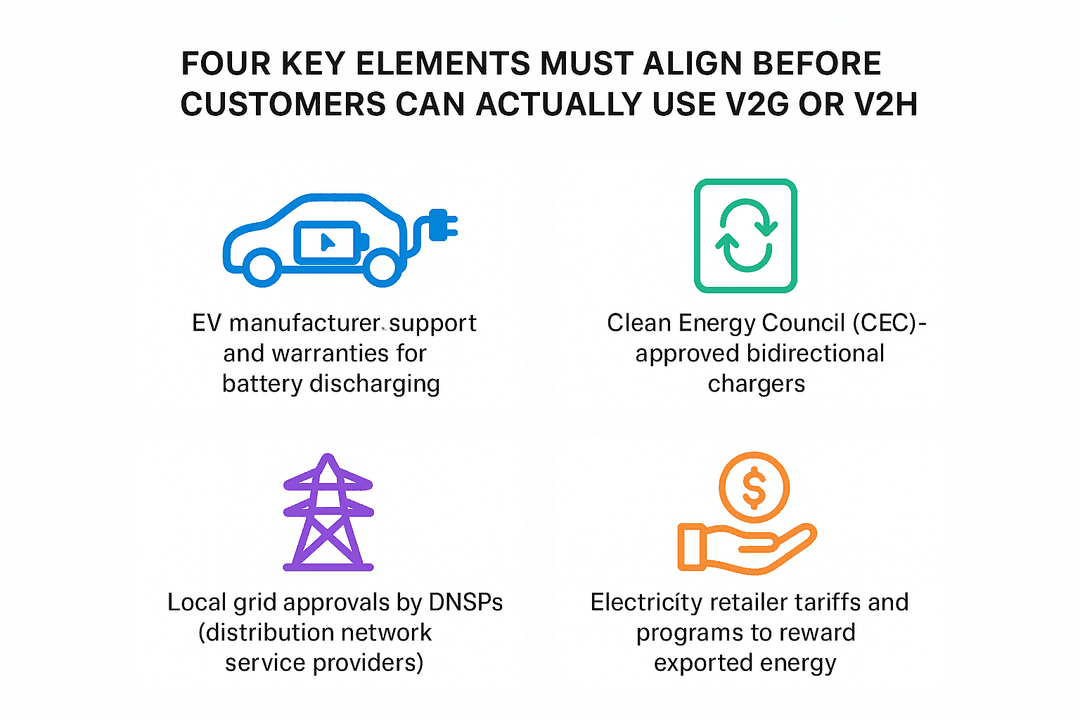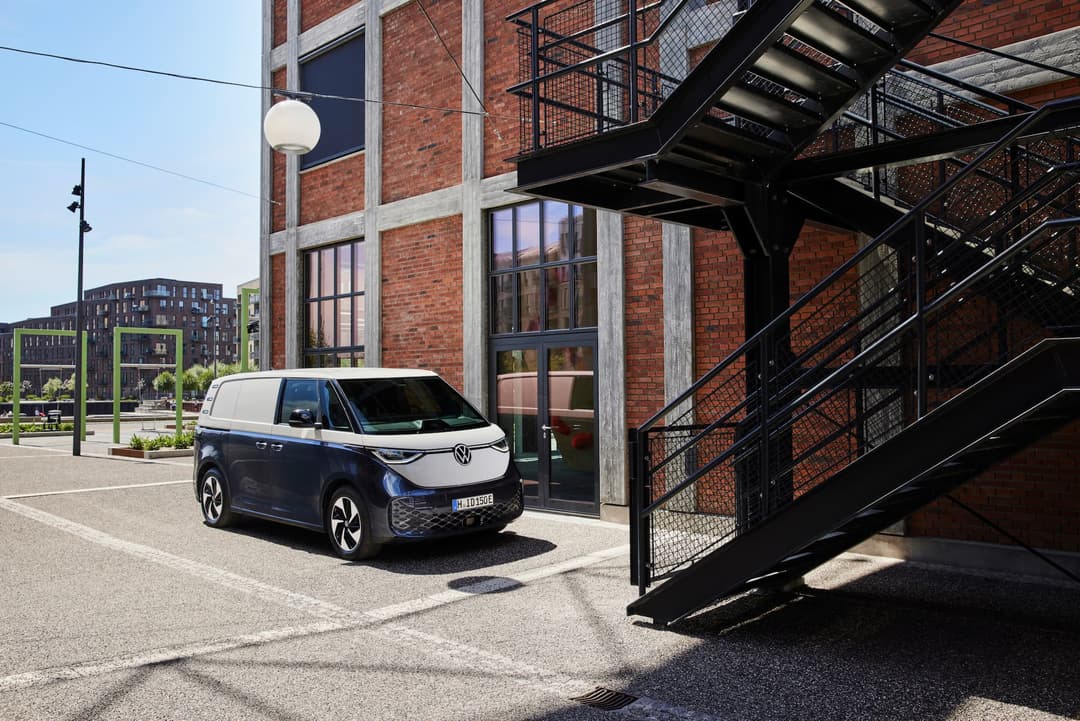
Vehicle-to-Grid (V2G) and Vehicle-to-Home (V2H) charging are two of the most exciting developments in Australia’s electric vehicle (EV) landscape. These technologies allow EV owners to use their car’s battery as an energy source for their home or the grid. This helps lower electricity bills, support renewables, and improve grid stability.
The Four Pillars of V2G and V2H

However, as we’ve covered in our guide to when V2G is really coming to Australia, four key elements must align before customers can actually use V2G or V2H:
- EV manufacturer support and warranties for battery discharging
- Clean Energy Council (CEC)-approved bidirectional chargers
- Local grid approvals by DNSPs (distribution network service providers)
- Electricity retailer tariffs and programs to reward exported energy
MORE▶️ When is V2G Really Coming to Australia?
Volkswagen is the first mass-market brand in Australia to bring it all together with its new ID.4, ID.5 and ID.Buzz electric vehicles. These models use the CCS2 plug and have confirmed support for fully bidirectional charging, making them the most V2G-ready EVs available today.

A First for Australia: Manufacturer Warranty Support
A linkedin post by technology entrepreneur Robert Farago, highlighted the warrany conditions for bidirectional charging are outlined in the Owners Manual for the Volkswagen ID.Buzz for RHD markets (UK, Australia). Page 637 of the manual sets the following limits for bidirectional charging:
- Up to 10,000 kWh discharging
- Up to 4,000 operating hours discharging
This warranty support is a first for a mass-market EV range in Australia and sets a benchmark for V2G-capable electric vehicles. VW has also indicated the capability may extend to other MEB-platform EVs, such as the Cupra Born and Skoda Enyaq, in the future.
While Volksagen Australia has not publicly confirmed the warranty support in Australia for bidirectional charging, this is evidence that warranty support will be provided to its line-up in Australia.
The Hardware: Compatible Bidirectional Chargers

At present, only Sigenergy’s bidirectional DC charger is listed with the Clean Energy Council, due to its integration with solar and battery inverters. However, several other charger brands have already achieved AS/NZS 4777 certification and are progressing through the CEC listing process. Many manufacturers have confirmed successful testing with Volkswagen’s ID. vehicles for V2G use.
It should be noted that electric cars do not need to be 'approved' by any utility or governing body, rather the vehicle just need to be 'compatible' with a bidirectional charger, which together form a system which operate similar to a home battery.
MORE▶️ Bidirectional V2H and V2G EV Chargers Guide
Getting Connected: Grid and Retailer Support
For V2G to work, your local network must approve bi-directional chargers. Electricity networks will need either AS4777.2 certification or CEC listing of the bidirectional charger in order for it to be grid-connected.
In Queensland, Energex has listed Volkswagen’s ID. models on its dedicated bi-directional charging information page: treating them much like home batteries. This signals growing readiness from DNSPs to support V2G-capable EVs.
Electricity retailers do not play a role in approving V2G but they can make it mroe attractive for customers by providing suitable tariffs for exports. Amber Electric, for example, has launched an ARENA-funded bi-directional EV charging trial, providing real-world opportunities for owners of V2G-capable vehicles to participate.
MORE▶️ Best EV Electricity Plans in Australia
Why Volkswagen’s Move Could Change The Game
Until now, Australian EV drivers have lacked a mainstream electric vehicle that meets all four V2G requirements: manufacturer warranty, compatible charger, DNSP approval, and retailer support.
The arrival of VW ID.4 V2G, VW ID.5 V2G, and VW ID.Buzz V2G which all support V2G changes that. For the first time, a mass-market EV range is ready for genuine bi-directional charging, setting the stage for wider adoption of V2H and V2G in Australia.
As more carmakers, charger suppliers, and energy retailers follow Volkswagen’s lead, Australian EV owners will gain the ability to power their homes, support the grid, and unlock new value from their electric vehicles.
About the author
Stay up to date with the latest EV news
- Get the latest news and update
- New EV model releases
- Get money savings-deal

